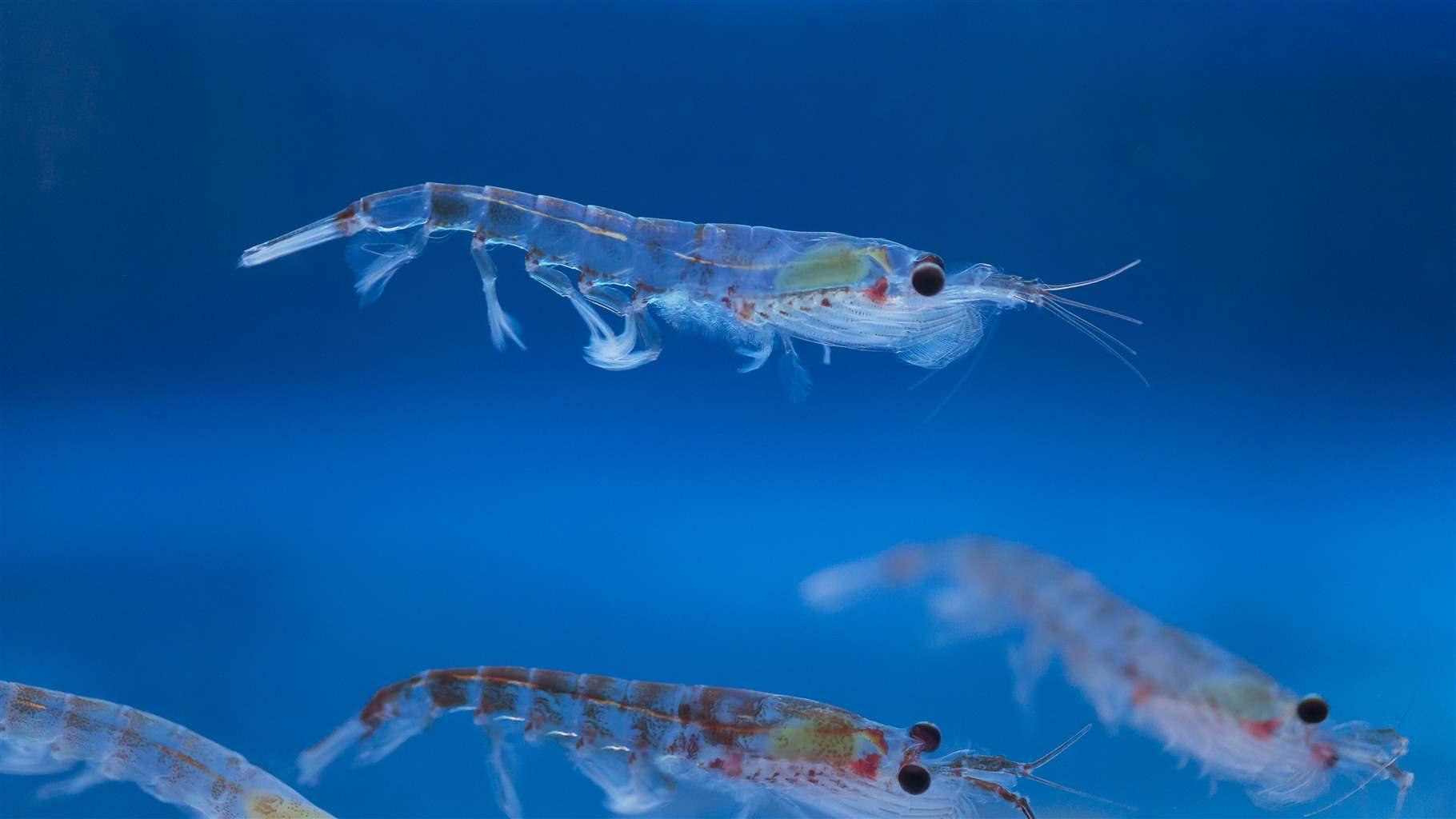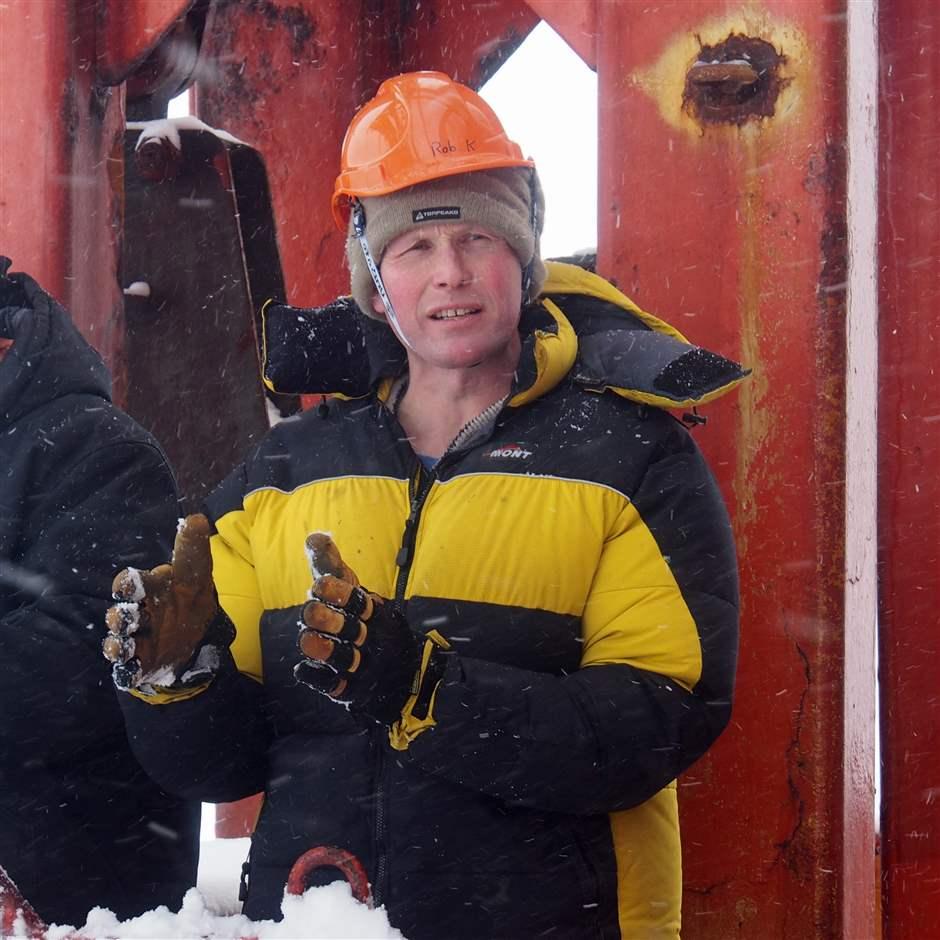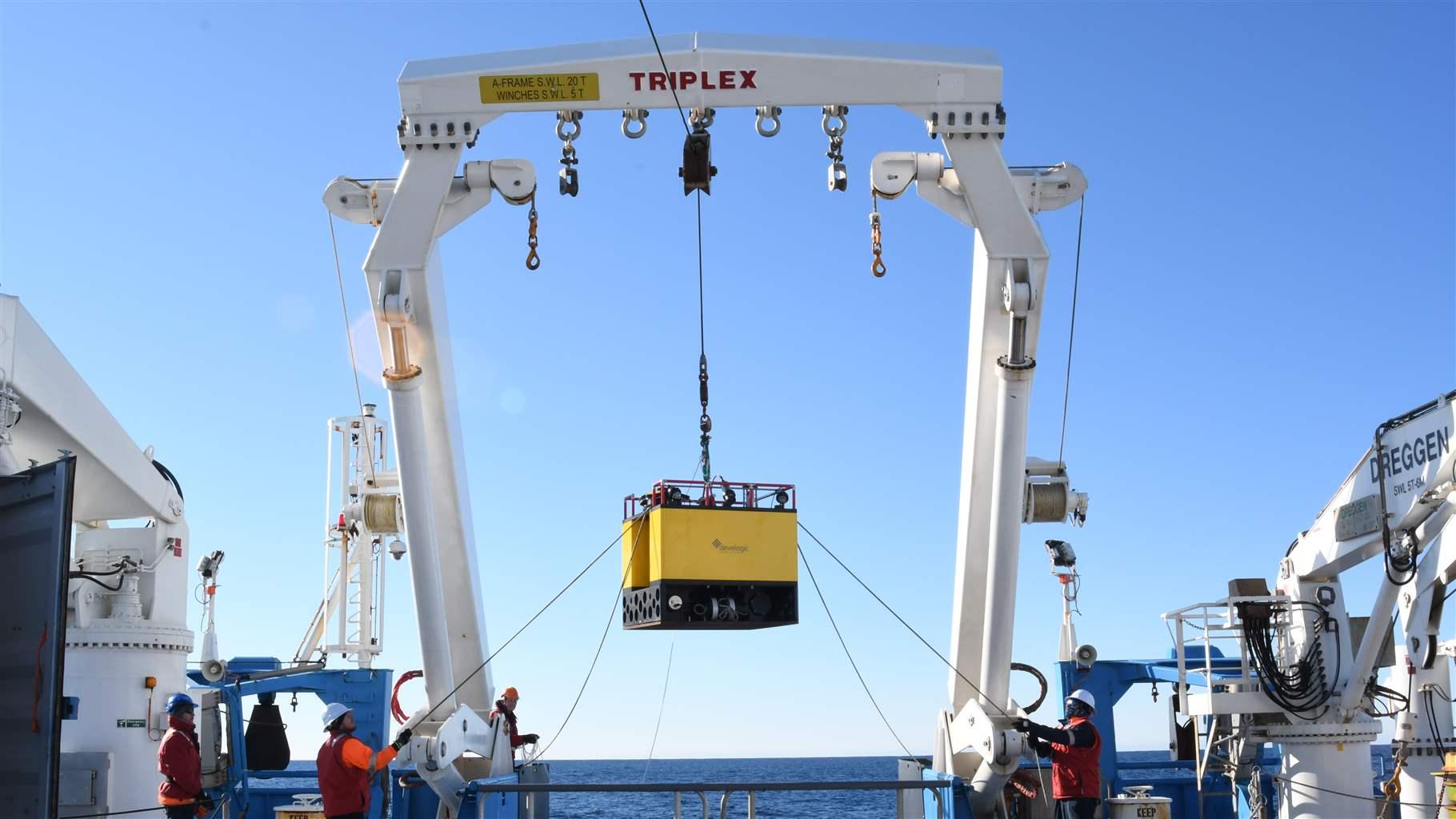Scientists Deploy New Technology to Determine Krill Activity on East Antarctic Seafloor
New data will fill gaps to update ecosystem-based management measures for the regional fishery

This is the fourth instalment of the series “Krill Chronicles From East Antarctica,” documenting the scientists on board the research vessel (RV) Investigator and their experiences.
Antarctic krill are the focus of a team of researchers from the Australian Antarctic Division (AAD) who have been in East Antarctica for the past two months on board the research vessel Investigator.
By using acoustics, studying krill predator behaviours, and drawing on knowledge of biological oceanography and krill biology genetics, the team aims to paint a full picture of how much krill is in East Antarctica and how predators use those krill in order to best manage a fishery that’s expected to grow in the region.
Rob King leads the team’s krill biology research activities, which involve some traditional data collection methods, including 50 to 60 trawls that will collect live krill in order to gather data on swarm composition. But the expedition is also the inaugural launch of a new technology: King and his team will deploy, for the first time, three krill observational moorings for benthic investigation (KOMBI) devices that will be retrieved in a subsequent voyage next year. Each device is fitted with a deep-sea camera and echosounder that will record the changes in krill presence on the seafloor for the full year—data that should improve our understandings of the distribution and dynamics of krill populations in three dimensions and deliver other key biological information, which is crucial to the development of effective ecosystem-based management for the krill fishery.
King, a marine biologist whose krill research for AAD has taken him on multiple research voyages to the Southern Ocean over the past 25 years, counts among his accomplishments the development of a unique aquarium, where live Antarctic krill are maintained for research purposes. His most recent research has focused on the effects of ocean acidification on krill embryological development.
This interview has been edited for clarity and length.
Q: What new information do you expect to get from the krill observation device known as the KOMBI?
A: Managing the Antarctic krill fishery requires an understanding of the distribution and dynamics of the krill population throughout the entire year. But we’re currently missing this information for the benthic, or seafloor, habitat—and for the winter season. By using the KOMBI to fill these gaps, we’ll be in a much better position to make management decisions for the conservation of the species and the ecosystem.
Q: How do the KOMBI actually fill those gaps?
A: We have three KOMBI units in two separate areas, which should provide an indication of how important the seafloor habitat is for Antarctic krill. But what the KOMBI does best is measure over time. In winter, when Antarctica is inaccessible, we’ll still be able to determine if these locations become important habitat, and we’ll be able to measure krill migration. Right now, we assume that we’re not missing krill biomass during acoustic surface surveys at specific times of the year, but data from the KOMBI will improve our confidence in the biomass estimates.
Q: Why is it so important that these biomass estimates be as accurate as possible?
A: Improving the accuracy of biomass estimates is key to fisheries management—and therefore ecosystem conservation. Everything we do to improve confidence in the biomass estimates improves the quality of our ecosystem management. And if we learn that benthic habitat is important for krill, that will certainly improve management measures.
Q: We understand that you will be using additional tools, including a krill light trap and deep-sea camera. What role will these instruments play in determining whether the seafloor is an important habitat for krill?
A: The deep-sea camera will record whether krill are present on the seafloor during the survey, which will give us summer data that will be extended to the winter months by the KOMBI program. The light trap provides this opportunity to get a sample of krill from the seafloor, which has never been done before. Analysis of these specimens will provide an indication of what these krill have been feeding on, which may indicate why they were found at the seafloor.
Q: What kind of biological information will you be collecting from the krill that you bring to the surface?
A: We’ll collect information on the amount of krill caught at different sizes, which will be combined with the acoustic data—and laboratory measurements of the physical properties of the caught krill—to calculate biomass estimates.
Q: How optimistic are you that the KOMBI approach will yield key information?
A: This hasn’t been done before, so I expect that we’ll get some quick answers about whether benthic habitat is important. That’ll be an indication, but this work will need to be followed up with repeat deployments over several years in different locations to identify key regions.
Q: Are you maintaining live krill on board the RV Investigator?
A: Yes, we maintain around 300 krill from each trawl individually in jars such that when they molt, we can collect their exoskeleton and determine how much they’ve grown over the past month.
Q: Why is that important?
A: Growth rate is a key parameter in fisheries management, so improving our dataset on krill growth—and monitoring for change—is fundamental to thorough and consistent management.
Q: Any difficulties in keeping them alive once you get them on board?
A: Growth experiments aren’t challenging at sea because we’re surrounded by an unlimited supply of clean oceanic seawater. Uncontaminated seawater is pumped around the experiment and percolates through small holes in the jars, providing oxygen and removing metabolic waste.
Fertilized eggs that are spawned from incubated females at sea are reared in the laboratory at the AAD’s Kingston marine research aquarium. Knowing the age of these krill is important, because the age of a population is another key parameter for fisheries management. Research in this field is ongoing, and the addition of more known-age individuals will contribute to discovering the most efficient means to perform age assessments on krill.
Q: You mentioned AAD’s marine research aquarium, which is your day job. Can you tell us a little bit more about that?
A: We run the aquarium as a research tool to enable long-term experiments on krill that exceed the length of a voyage—and to also permit research to be performed quickly without the need to undertake a voyage. That allows us to collaborate with scientists from around the world and to ask complex questions that require replication or long time frames. The aquarium is the only one of its kind; it’s an international research resource that’s key to understanding the biology, and therefore the management, of the krill fishery.
Q: What’s the most interesting thing about krill to you?
A: It’s their ability to perform either as a superorganism or as an individual, depending on conditions. It’s fascinating how they communicate in a swarm, navigate and make a collective decision, and use photophores—their light-producing organs. Understanding when they instigate swarming behaviour and when they break apart to act as an individual on short-term and long-term time scales is fascinating. We don’t know how krill vary between swarming versus individual behaviour over winter, and the strategies they use to get through this period. I’m hoping that the KOMBI project, along with further studies, will unlock some of these answers.
Q: What drew you into Southern Ocean and krill research in the first place?
A: One of my college professors while I was studying marine biology inspired my fascination with crustaceans, and so it was natural for me to work on the most important crustacean globally: Antarctic krill.
Q: As a scientist, did your opinion on Antarctic conservation and the management of marine resources change after you physically visited the Southern Ocean and the frozen continent for the first time?
A: You can’t visit the Southern Ocean and Antarctica without being changed. The scale and power of the environment is humbling, and it firmly cements the importance of the ecosystem as a global resource and the physical system as a critical stabilizer of global climate.
Q: What are the most challenging and most rewarding aspects of participating in a two-month research survey during a pandemic?
A: It’s always a privilege to undertake a research voyage into the Southern Ocean. Having all your needs taken care of for two months at sea so you can focus on research is an intense and rewarding experience for a scientist. And to be able to continue to do this while the world is grappling with a pandemic—while many people are fighting for life or for their economic security—is another step up in terms of appreciating that privilege. It’s also a measure of just how important it is to not drop the ball and to maintain our focus on the conservation and sustainability of Southern Ocean resources for the long-term benefit of the global community.
Q: What’s the most exciting thing you’ve learned so far on this survey?
A: Krill can be imaged on the seafloor and then caught using a light trap and returned to the surface alive for research.














